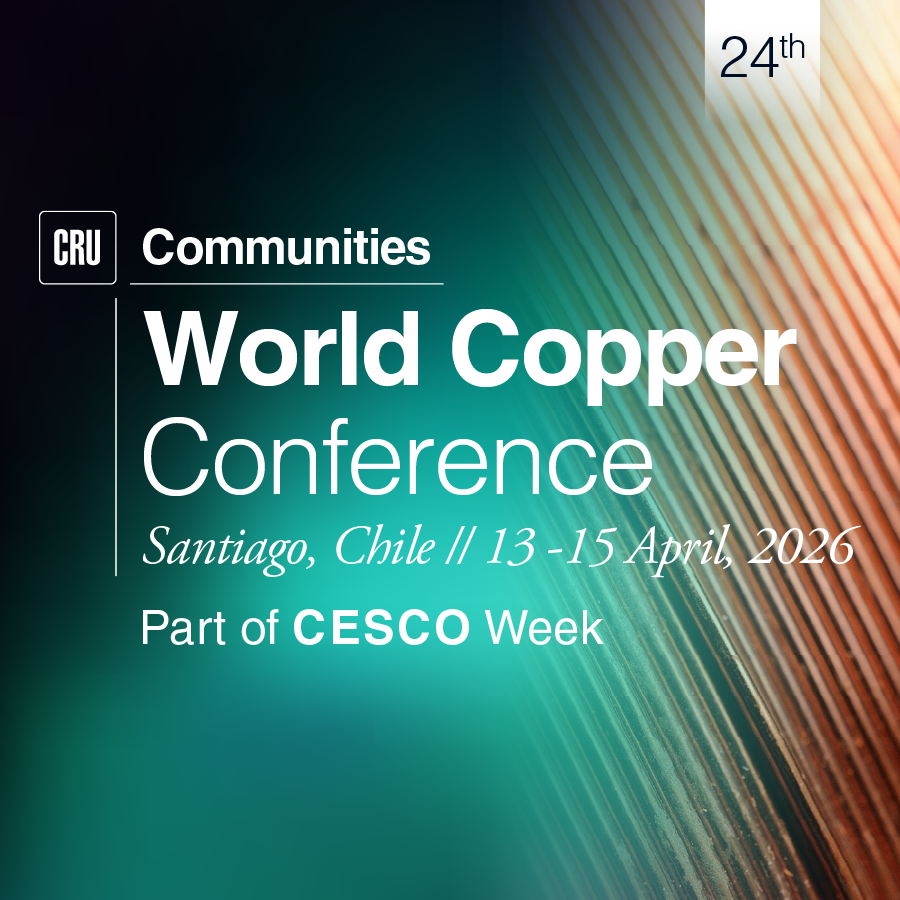Decarbonisation rewrites the commodity industry rule book and relies on a large number of metals supply chains that have to be expanded massively, some built from almost scratch, others rebuilt, re-mapped or adapted, whether in previously mature or rapidly emerging markets.
Bottlenecks often appear when such redesigns rely partly on historically neglected commodities that make it exceptionally difficult for supply to match rapidly accelerating demand and generate criticality. Some bottlenecks can easily be resolved with timely investments, but the higher upstream in the value chain they occur, the more they face the hardest challenge to overcome: time.
Mining and primary processing capacity takes time to permit, finance, build, start up, ramp up and then optimise. Even from a bankable feasibility study publication date, the minimum time to full capacity production takes years, with inevitable hold-ups caused by permitting challenges, financing processes and infrastructure issues. This is true even in balanced markets that grow incrementally. In hockey-stick environments such as those created by energy transition and electrification efforts, the unpredictability of future demand and the rapid rate of technological obsolescence adds important layers of uncertainty and, inevitably, further delay.
Government and private stakeholders have shown plenty of interest, intent and even appetite for investments in new technologies. Research and development (R&D) has seen record funding, and has resulted in substantial improvements, particularly in cost efficiency for greener technologies, from the cost of solar and wind energy, to electric vehicles, to energy storage solutions. By comparison, investment requirements in upstream capacity to feed these new solutions are capital-intensive, often unpopular in the host country, and raise additional issues such as power and water availability, social responsibility and the local environmental footprint. Crucially, they also require the success of downstream technologies that will consume the primary material, a risk not always easily tolerated. In this series of insights, we will discuss some of the key issues affecting upstream bottlenecks, and possible solutions to eliminate or mitigate their risk.
This record funding for R&D has not yet been replicated for upstream mining. What is needed to reach even the most modest temperature scenarios by 2050 is peak, or near peak, historical investment in mining on an annual basis every year for more than 25 years. A difficult task when financiers are increasingly risk averse on direct commodity production lending. Financing wariness is a very real worry that risks the creation of sizeable supply gaps as major decarbonising trends are set to intensify.
While R&D budgets can and are made available relatively easily, upstream development capital is often stuck in a difficult quandary: the pace and nature of the evolution of downstream demand is both new and uncertain, while the tools used to evaluate projects, particularly for lending, continue to place the same traditional emphasis on reliability, proven track records and confidence in outcomes.
Africa illustrates many facets of this problem. The continent’s mineral endowment can provide a substantial piece of the evolving puzzle, as the healthy and growing copper pipeline of projects shows. While still dominated by DRC and Zambian expansions, the copper pipeline now includes junior-led mining projects in less prominent copper mining jurisdictions such as Botswana, Angola, Namibia. Tanzania and Mozambique have some of the most promising deposits of graphite. Greenfield project development faces many of the same issues seen elsewhere, with permitting delays and financing uncertainties, but successful start-ups and expansions like Cupric Canyon and Syrah have been encouraging for the sector. Over the last two decades, the world has relied heavily on China to fill supply gaps, particularly in primary processing such as smelting and refining as Chinese miners were willing to take on the risk of building out capacity. However, mining projects that send their material to China are seen by lenders as risky; meanwhile, mining projects that look to integrate into primary processing have higher capital intensity considered undesirable for junior miners. Some jurisdictions have identified this problem and taken a useful first step in designating critical minerals and considering accelerated permitting programmes.
The next necessary step is identifying key bottlenecks that need immediate intervention and guaranteeing loans for the right projects. This would be a decisive indicator of intent, and for that reason it will not be done lightly, even in mining-friendly countries. Understanding how to identify and promote the right projects is key to generating and maintaining the confidence of both lenders and prospective strategic partners, as it always has been. CRU has already advised extensively on this subject, increasing awareness of the size of the challenge, but also of the importance of setting successful precedents as landmarks of forward movement.
Power availability for major new industrial projects is another major issue in the development of value chains need for decarbonisation. With much of hydro potential already exploited, “green” energy can be expensive to build and is often directed primarily at consumer markets. As with financing and permitting, allocation of renewable power to major industry can be both unpopular and difficult in regions where power is already scarce, including some regions in the Global South with large mineral endowments.
Making power available at competitive tariffs for industrial use is essential to the economic viability of many power-hungry sectors, including some highly relevant to energy transition efforts, such as silicon and magnesium smelting, ferroalloy refining and cathode materials for lithium-ion batteries. However, building captive wind or solar farms specifically for industry adds capital intensity and increases the risk of cost overruns, as well as creating additional issues such as energy storage and surplus grid distribution. The designation of critical minerals in accordance with each jurisdiction’s mineral endowment and/or consumption needs is a useful way to underline the presence of multiple incentives for development. However, there is very little coordination at the global level to ensure that the most promising locations across competitive drivers are adequately rewarded for not just hosting new capacity but actively promoting it.
There are many more specific bottlenecks to each industry, and CRU has been asked to help address many of them, including the availability of the right kind of elemental carbon, processing routes in nickel and lithium or the delays in the formation of “green” premiums in many key sectors like aluminium, copper and even steel. Above all though, striking the right balance between promoting new technologies and ensuring the availability of raw materials to enable them has to become a higher priority, with all stakeholders involved in establishing the right conditions for successful precedents to continue to drive momentum upstream and sustain the required pace of downstream evolution.
Recently CRU ran a collaborative discussion session on critical technologies and materials, which required each participant to propose one single, specific material or technology that can make the biggest impact to the global decarbonisation effort. We aimed to group the answers into a number of headings, including Mining, Raw Materials, Electricity Generation, Grid Capacity and Storage, Electrified Transport, and Electricity Consumption at both domestic and industrial level. In a group of around 30 participants, not a single solution proposed fell under Raw Materials. This reflects the overall focus of the industrial sector and of the key stakeholders in decarbonisation, where much of the attention, innovation and investment is downstream, with technological innovation changing the value chains rapidly and little mind paid to the long-term supply issues that are likely to affect the ability to scale up the chosen paths. Without far more investment into raw material markets, decarbonisation efforts will slow, or in some cases, be halted altogether. This will have to change.
Africa holds the key to resolving some of the imminent upstream bottlenecks in the key decarbonisation trends, with some of the best untapped mineral deposits the world can hope to develop. However, without greater attention paid to investment into raw material markets, these bottlenecks are at risk of remaining unresolved, at which point decarbonisation trends will inevitably slow or even halt. Concerted efforts between the holders of key resources and the downstream beneficiaries across the world is needed to prevent this.

















